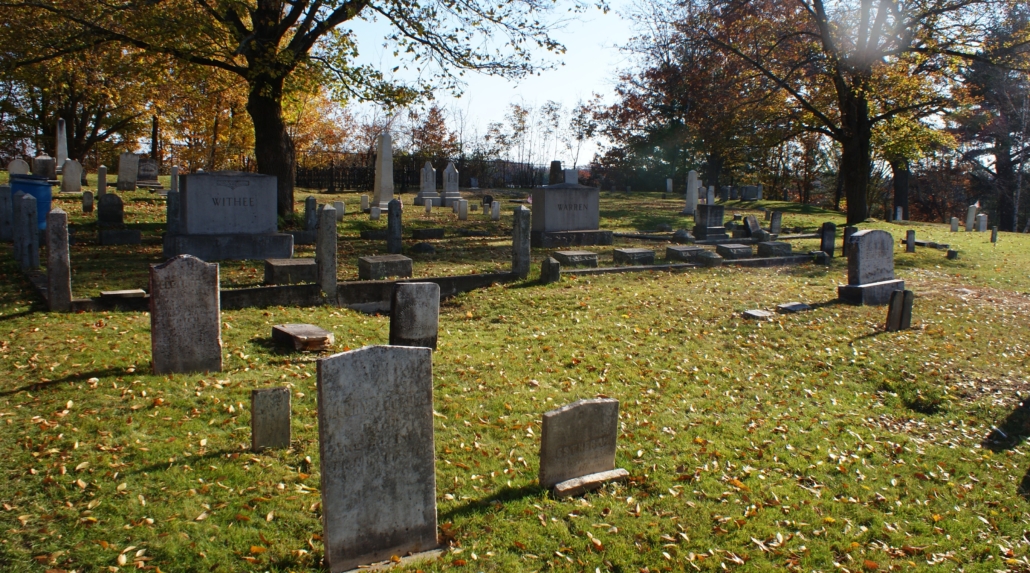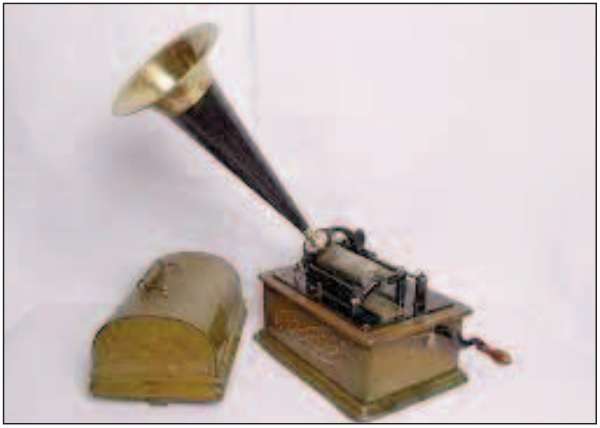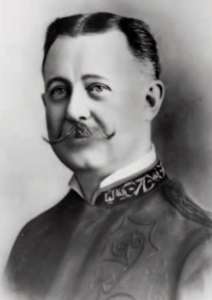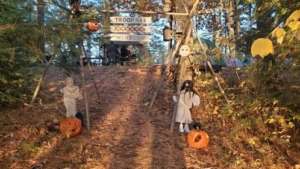Local residents named to Simmons Univ. dean’s list
/0 Comments/in Community, School News, Vassalboro, Waterville, Winslow/by Website Editor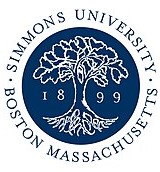 The following local students were named to the 2022 spring semester dean’s list at Simmons University, in Boston, Massachusetts:
The following local students were named to the 2022 spring semester dean’s list at Simmons University, in Boston, Massachusetts:
Kaili Shorey, of Vassalboro, Abigail Bloom and Amanda Farrington, both of Waterville, and Maddie Beckwith, of Winslow.
SNHU announces summer 2022 dean’s list
/0 Comments/in Augusta, Community, Skowhegan, Waterville, Winslow/by Website Editor Southern New Hampshire University (SNHU), in Manchester, New Hampshire, congratulates the following students on being named to the summer 2022 dean’s list. The summer terms run from May to August.
Southern New Hampshire University (SNHU), in Manchester, New Hampshire, congratulates the following students on being named to the summer 2022 dean’s list. The summer terms run from May to August.
Full-time undergraduate students who have earned a minimum grade-point average of 3.500 to 3.699 for the reporting term are named to the Dean’s List. Full-time status is achieved by earning 12 credits over each 16-week term or paired 8-week terms grouped in fall, winter/spring, and summer.
Elizabeth Kearney, of Augusta; Lizsandra Lopez, of Winslow; Patric Moore, of Waterville; and Sasha Hanscom, of Skowhegan.
Stories from Fort Hill Cemetery: Joseph Eaton (1800 – 1860)
/0 Comments/in Local History, Maine History, Winslow/by Website Editorby Kit Alexander
As you walk through the entrance of Fort Hill Cemetery and look left, you will see a tall, granite obelisk dated 1886 with the name Eaton inscribed on it. The monument looks a little out of place in this humble, Winslow cemetery, but then, Joseph Eaton died a wealthy man. The simple but dignified memorial sits on the largest lot in Fort Hill, the resting place of Joseph and 15 of his direct and extended family members.
At the age of 17, Joseph came to Winslow from Bowdoin with his father, Solomon. Solomon already owned a store and other businesses in Winslow, and Joseph and he went into business together when Joseph turned 21. They engaged in trade of all types, using the rivers as their route of transportation. Besides running the store, they bought and sold land, traded in lumber, and owned several saw mills in the area.
During the years 1831 and 1834, Joseph was a selectman in the town. Elected to the Maine State Legislature from 1829-1832, he later served two terms in the Senate.
Joseph was one of the founders of the Kennebec & Somerset Railroad which stretched from Augusta to Waterville and then Skowhegan. It later became part of the Central Maine Railroad, and Joseph served as president for both.
As the years passed, Joseph engaged in other enterprises in the Winslow area, including the toll bridge over the Sebasticook River. He served as a trustee for the Waterville Liberal Institute and was president of the Ticonic Bank during the last ten years of his life.
So, we can see that the Honorable Joseph Eaton, as he was known, was a busy man, running lucrative businesses, standing for local and state offices, and lending his energy to the success of education and other community institutions. Joseph died in 1865 after a spell of paralysis, due, most likely, to stroke. His obituary described him as “…one of the most energetic and successful business men of Maine…”
In 1830, Joseph married Mary Ann Loring, of Norridgewock, and together they had nine children. Their first child, Abigail, born the year of their marriage, died at the age of seven, just three and a half years after the twins were born. Oddly enough, Abigail has two stones in Fort Hill, one in the family plot and another far away in the older section. Both stones are marked “Abbie Eaton” with a death date of 1837, so the grave must belong to the same person. Now why would that be?
The first twin, Charles, born in 1834, was initially a grain dealer, in Fairfield. In 1856, he married Mary Lucia Johnson, in Québec, Canada, and they later moved to Boston. He served in the Civil War, having been drafted in 1863. Charles died a single man in Plaistow, New Hampshire, of kidney disease in 1886.
Charles’ twin brother, Roland Leonard, appears to have been supported by his father throughout his life, living in hotels in Waterville over the years. Joseph left him one sixth of his estate in 1865, but appointed his wife and one of his sons as trustees. After five years, Roland could have free access to his inheritance if he had developed “…confirmed habits of sobriety and frugality…” An 1867 article in the Augusta, ME newspaper, Maine Farmer, described an accident in which Roland’s foot was crushed when he jumped onto a moving freight train. He died unmarried three years later.
Next came Joseph Jr., in 1837, who grew up to be a successful farmer in Winslow. He married Ellen Simpson in 1866, fathered two sons, and died three years later of heart disease. He was a Captain in Co. H. of the 19th Maine Infantry during the Civil War.
Mary Ann was born in 1839 and became the wife of Horace Batchelder in 1866. She spent most of her life in Boston and died there of heart disease in 1897.
Abbie Frances came along four years later. She was rewarded by way of a special gift in her father’s will, caring for him in his final days. She moved to Massachusetts to live with her sister after his death and married Lucius Allen in 1873, dying of heart disease in Boston in 1905.
Solomon, named for his grandfather, was born in 1846. He moved to Boston before 1860, lived with Abbie Frances, and worked in sales and bookkeeping. At the age of 59, he married Anna M. Bauer, 24 years his junior. They must have moved back to Winslow around 1832 when Solomon died and where Anna continued to live until her death in 1951.
Francis Loring was born in 1849, followed by Frederick three years later. “Frankie” and “Freddie” died nine days apart in 1857, most likely of infectious disease.
And so, at age 43, Mary Ann’s child bearing years were over. Six children had grown to adulthood in the Eaton household over a period 37 years, three having died in childhood. She passed away three years after Joseph, following what must have been a full life as the wife of a prominent businessman.
While four of the Eaton children moved to other states, they all came back to spend eternity with their family in Fort Hill. The only exception was Abbie Allen who was buried close by in Pine Grove Cemetery, in Waterville, along with her husband’s ancestors.
Besides Joseph’s nine children, Mary’s husband Horace, Joseph, Jr.’s wife, Ellen, their sons Walter and Joseph, and Joseph’s wife, Iva, were buried on the front of the plot. On the back was the resting place of Solomon’s wife, Anna, who lived until 1951.
One could assume that Joseph was the wealthiest man buried at Fort Hill. In 1850, the Winslow census showed him owning $50,000 worth of real estate. Five years before his death, the census recorded $60,000 in real estate and $10,000. in personal property, altogether worth well over $2 million in today’s money. His will contained 57 pages, and while his net worth was not indicated, it must have been significant.
And so, can we say Joseph and Mary Ann’s family was much like other wealthy families living in rural Maine in the middle of the 19th century? The father worked at a furious pace to enrich his town, increase his own wealth, and support his six children, while his wife, along with a few domestic helpers, managed the house and cared for their children. Death took three of their children early on, a common occurrence at the time.
But can we compare the Eaton family to one of today? One son appears to have been a “bad boy,” unable to conduct himself in an appropriate manner. Five children went on to live successful lives, four of them leaving the little town of Winslow for the big city. One son stayed behind, possibly to help his parents, working the land and dying at an early age. The youngest of them lived to be an old man, while the others, including Joseph, were prone to early death from heart disease. Both the Eaton family and the town of Winslow sent two of their sons to military service and brought them home again. Aside from its great wealth and the loss of three little ones, the family could be similar to others that live here today. Did the Eatons talk about the institution of slavery at their dinner table, much the same as equal rights for African Americans are discussed at supper tables today?
The older, southern part of Fort Hill, contains the graves of some of the men and women who were instrumental in carving Winslow out of the wilderness. When Joseph came to town many years later, his drive and determination helped it to continue to grow. He was responsible, in part or in whole, for some of the area’s institutions and businesses we may have heard of or can still see the remnants of today. The next time we drive north over the Sebasticook River bridge, we might think of this man and his family who are still memorialized not too far down the road and up the hill.
Up and down the Kennebec Valley: Social clubs in Kennebec Valley
/0 Comments/in Local History, Maine History, Up and Down the Kennebec Valley, Windsor, Winslow/by Mary Growby Mary Grow
Last week’s article talked mostly about ways early settlers interacted socially as individuals and families. This week’s piece will describe some of the 19th-century organizations that united residents and kept them busy, and related topics.
Kennebec Valley towns had a variety of organizations, some branches of national groups and others home-grown. Some built headquarters buildings; other groups met wherever they could, in public spaces or private homes.
In her chapter on social life in Edwin Carey Whittemore’s centennial history, Martha Dunn described some of Waterville’s 19th-century organizations. Separate chapters listed others.
The first Waterville literary organization for which Dunn found records was the Shakespearean Club, whose members presented Shakespeare’s plays. Started about 1852, it included men and women. Meetings were held weekly “during the winter season” at members’ houses.
Dunn named two members: Baptist church pastor Rev. N[athaniel] Milton Wood, “a man of strict tenets and naturally lugubrious cast of countenance,” who reportedly “not only excelled but delighted in the representation of comic parts”; and Mrs. Ephraim Maxham (the former Eliza Anna Naylor, according to on-line sources), wife of the Waterville Mail owner-editor, who “was especially skilled in the rendering of tragedy.”
The club disbanded during the Civil War and after the war reformed as the Roundabout and continued another half-dozen years, becoming, Dunn wrote, less intellectual and “more given to feasting and social enjoyments.”
Mrs. James H. Hanson (the former Mary E. Field, of Sidney) wrote a chapter in Whittemore’s history on the Waterville Women’s Association, an organization praised by Dunn and in Henry Kingsbury’s Kennebec County history. Dunn called it the place “where women may work – and enjoy – together, independent of society distinctions or church affiliations.”
A wealthy widow named Sarah Scott Ware (Mrs. John Ware, Sr.) founded the Association in 1897, with working women and girls foremost in her mind. She wanted to provide a “homelike” place for them, with “facilities for literary and womanly culture and usefulness,” beginning with a lending library.
By 1902 the club had well over 100 members. Its rooms provided books, magazines and newspapers; games; and a sewing machine. Women and girls attended late-afternoon programs and evening classes (Kingsbury listed instruction in “needlework, penmanship, music and a variety of useful arts”). The group ran a lunchroom, an employment bureau and a second-hand clothing distribution center.
Funding came from donations and, Hanson wrote, “the successful doll sales and May-basket sales.” For those she credited the enthusiasm and skill of the young members; they “were also indispensable in the work of the schools,” she wrote.
The Women’s Association spun off the Women’s Literary Club in the winter of 1891-1892. Dunn wrote the members met “fortnightly during the winter season” for literary and musical programs, gathering in church vestries, at Waterville Classical Institute (so named in 1865; after 1883, Coburn Classical Institute) or in members’ houses.
A separate club called the Literature Class, with a dozen members, met weekly “during the winter months.”
Augusta, according to Kingsbury, had a Benevolent Society, started about 1842 “by Miss Jane Howard, a maiden lady whose name is still fragrant in this community, by reason of her many deeds of benevolence and charity.” Later renamed the Howard Benevolent Society and in 1883 The Howard Benevolent Union, Kingsbury said its work was primarily “clothing the poor.”
The Fairfield bicentennial history records a Ladies Book Club, started in 1895. As described in the Nov. 11, 2021, The Town Line, one founding member was Addie Lawrence, whose father a few years later donated money to build Fairfield’s Lawrence Library.
Vassalboro historian Alma Pierce Robbins listed – without dates – four clubs, at least three identified as women’s clubs, and said two of them “met at members’ homes year ’round.”
In Palermo, historian Milton Dowe wrote, the Branch Mills Ladies Sewing Circle first met on March 10, 1853, hosted by Mrs. B. Harrington (almost certainly the wife of Barzillai Harrington; he was recognized in the Sept. 23, 2021, issue of The Town Line for starting a high school in China’s side of Branch Mills Village about 1851).
The sewing circle remained active for years; its members were responsible for construction of the Branch Mills Community House in 1922.
Among national/international organizations with local affiliates, the Masons, mostly the Ancient Free and Accepted Masons (A. F. & A. M.), had branches in many Maine towns.
Windsor had Malta Lodge for about five years in the 1880s, according to Leonard Lowden’s town history. Members customarily met “weekly on Saturday nights.” After the lodge shut down, on “Saturday evening, December 12, 1885,” the few Windsor men still interested joined the lodge in Weeks Mills, “on Saturday night, May 29, 1886.”
Kingsbury wrote that Benton’s Lodge was organized Nov. 21, 1891, and as he finished his county history in 1892 was “in a flourishing condition.” Members met every Thursday evening in one of Benton’s schoolhouses.
Masonic lodges were also noted in histories of Augusta (four lodges, the earliest founded in 1821); China (four lodges, the first dating from 1824); Clinton (Sebasticook Lodge, chartered in May 1868); and Fairfield (Siloam Lodge, chartered March 8, 1858, with 13 members).
Sidney’s branch of the A. F. & A. M. was Rural Lodge No. 53, according to Alice Hammond’s town history. A dozen men, some members of a lodge in Waterville, started it on April 25, 1827.
The lodge disbanded in 1836, she wrote, “because of the violent anti-masonic feeling which prevailed at that time.” The China bicentennial history expanded on that theme, quoting from Thomas Burrill’s history of Central Lodge.
Burrill said “Antimasonry” started about 1829 and soon “assumed a most formidable type of persecution, both against Masons and Masonry.” Central Lodge members got rid of their paraphernalia, sending “their beautiful painted flooring” to a Lodge in St. Croix and abandoning their hall. The Lodge reassembled in 1849.
Sidney’s Rural Lodge was revived in 1863, Hammond said. A Masonic Hall was built in 1887 and dedicated Jan. 3, 1888. After the dedication and installation of officers, members went to Sidney Town Hall “where a bountiful repast was served and a social time enjoyed.”
Rural Lodge No. 53 is still active, listed on a Maine Masons website, with a photo of the white wooden lodge hall at 3000 Middle Road. The website also lists Lodges in Augusta, China (China Village), Clinton, Fairfield, Waterville and Weeks Mills (China).
The Order of the Eastern Star, related to the Masons and open to women and men, had branches in China, Fairfield and Waterville, among other towns.
Another widely represented organization was the Independent Order of Good Templars (I. O. G. T.). Founded in New York State in 1852, it soon became an international temperance organization open to men and women. Maine’s Grand Lodge of the I. O. G. T. was created in the summer of 1860.
The Sons of Temperance, founded in 1842, also organized in the area, including, Kingsbury wrote, three local branches in China.
In Vassalboro, historian Robbins saw temperance as an issue from the 1820s. In 1821, eight “innkeepers” got liquor licenses, she wrote; by 1829 Congregational pastor Rev. Thomas Adams was preaching temperance.
In 1834, Robbins wrote, Vassalboro’s Juvenile Temperance Society was organized. The president was Abiel John Getchel; an on-line search found a Vassalboro resident of that name (spelled Getchell) born in Vassalboro in 1815, so 19 years old in 1834. One of three executive committee members was Greenlief Low, born in 1817.
Vassalboro had three I. O. G. T. Lodges, Robbins wrote. Each had its own meeting hall: “a nice little hall” at Riverside (demolished in the 1930s): “Golden Cross Hall” in North Vassalboro; and Maccabees Hall “in Center Vassalboro or Cross Hill.”
The buildings were supposed to be only for the organizations’ events, Robbins wrote, but later she said Maccabees Hall was the scene of “many meetings.” The Riverside hall hosted dances, “Christian Endeavor plays” and “demonstrations of ‘fireless cookers'” by the University of Maine Extension Service.
(Wikipedia says The Young People’s Society of Christian Endeavour was founded in 1881 in Portland by Rev. Francis Edward Clark, with the goal of bringing young people to interdenominational Christian belief and work. By 1906 there were more than four million members around the world in “67,000 youth-led…societies.” Causes members supported included temperance.)
Dowe wrote the Good Templars and Christian Endeavor were active in 19th-century Palermo. The East Palermo schoolhouse, he wrote, served as a community center and “church for prayer meetings and the Young People’s Christian Endeavor.”
The schoolhouse also hosted singing, spelling and writing schools, Dowe said. When phonographs first came to Palermo, an unspecified group or person would charge admission to listen to one in the schoolhouse.
In her history of Sidney, Alice Hammond found another reference to phonograph shows: she reproduced a poster advertising PHONOGRAPH!, an exhibition starting at 7:30 p.m., Friday, Feb. 5, 1892, at the Grange Hall, in Centre Sidney.
“There will be an exhibition of the marvels of the modern phonograph,” the poster promised. “It Will Talk, Laugh, Sing, Whistle, Play on all sorts Instruments including Full Brass Band.”
Professor R. B. Capen, of Augusta, would explain the device. Admission was 20 cents, half price for children under 12.
The exhibition would be followed by a supper “Furnished at the Hall” and a Grand Ball, with music by Dennis’ Orchestra of Augusta, dance tickets sold at 50 cents for each couple and dancing until 2 a.m.
Another organization Lowden noted was the Grand Army of the Republic (G.A.R.), the Civil War veterans’ organization founded in 1866 in Illinois and dissolved in 1956 after its last member died. The Windsor post was organized June 2, 1884, and met in its hall on the second floor of the town house “on each Saturday night” (with at least one Wednesday evening gathering – see the paragraphs on Civil War soldier Marcellus Vining in the March 31, 2022, issue of The Town Line).
Augusta had Masons and Odd Fellows; a lodge of the Knights of Honor (its chief officer’s title was dictator, according to Kingsbury); Dirigo Council No. 790 of the Royal Arcanum (1883); and Tribe No. 12 of the Independent Order of Red Men (1888).
Late 19th-century organizations in Fairfield included local Masons and Odd Fellows; an Eastern Star chapter; and the Past and Present Club, organized by 15 women in 1892 and accepted into the General Federation of Women’s Clubs in 1899.
Waterville had Masons, Odd Fellows, Good Templars, a Tribe of Red Men and numerous other groups. Whittemore listed Hall’s Military Band, the late-19th-century successor to local brass bands first organized in 1822; a choral group named the Cecilia Club, organized in 1896; and since 1892 the Waterville Bicycle Club and the Waterville Gun Club.
The Bicycle Club, Whittemore wrote, rented an entire floor of the Boutelle Block at Main and Temple streets. The premises hosted meetings and social events; gambling and liquor were banned.
The Gun Club’s five-man team won state championships in 1897, 1898 and 1901. The club produced two individual state champions, Walter E. Reid once and Samuel L. Preble twice (no years given).
Main sources
Dowe, Milton E., History Town of Palermo Incorporated 1884 (1954).
Fairfield Historical Society, Fairfield, Maine 1788-1988 (1988).
Grow, Mary M., China Maine Bicentennial History including 1984 revisions (1984).
Hammond, Alice, History of Sidney Maine 1792-1992 (1992).
Kingsbury, Henry D., ed., Illustrated History of Kennebec County Maine 1625-1892 (1892).
Lowden, Linwood H., good Land & fine Contrey but Poor roads a history of Windsor, Maine (1993).
Robbins, Alma Pierce, History of Vassalborough Maine 1771 1971 n.d. (1971).
Whittemore, Rev. Edwin Carey, Centennial History of Waterville 1802-1902 (1902).
Websites, miscellaneous.
Scouts converge at Bomazeen for annual fall camporee
/0 Comments/in Belgrade, Community, Sidney, Winslow/by Website Editor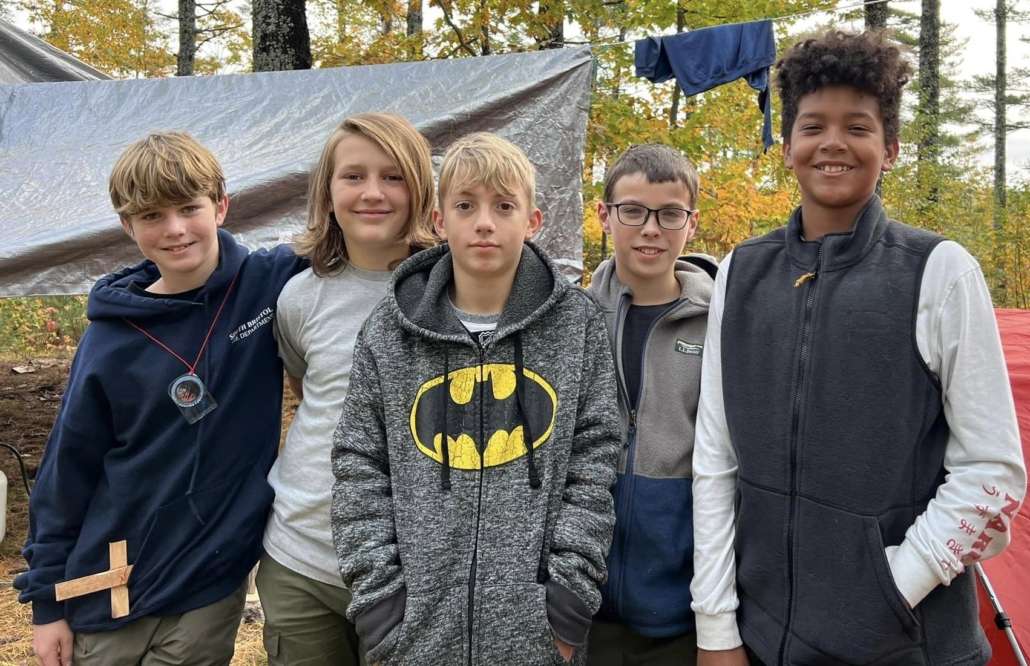
Troop #213 Scouts Eddie Seiders, of South Bristol, Finley Greenleaf and Peter Delonzo, both of Jefferson, Elijah Smith, of Boothbay, and Malachi Donaldson, of Boothbay Harbor, camped overnight in the rain and wind but had a great time. (contributed photo)
by Chuck Mahaleris
More than one hundred Scouts and leaders from Somerset, Kennebec and Lincoln Counties descended on Camp Bomazeen in Belgrade for the annual Fall Camp-O-Ree held on the weekend of October 14 through 16. The theme was “Anything Goes with a Touch of Halloween.”
Each Scout troop that attended not only camped out but ran one of the stations. These ranged from such traditional Scouting activities such as Orienteering, Pioneering, Primitive Fire Building and Shooting Sports to more Spooky-themed events such as Witches Brew Stew Competition, creepy obstacle course, and best Halloween Costumes. Scouts also went trick or treating from station to station collecting candy as they went.
“Our little spook-o-ree drew in a whole bunch of Scouts who got to go from station to station performing their scout skills for points,” said Chris Bernier, of Winslow, who ran the event. “Huge thank you to all of the staff who came out to lend a hand running events and thank you to the leaders of all the units who came for also running a station. I already miss sharing a campfire with all of you and I can not wait for the Klondike Derby and Spring Camporee.”
Troop #213,, of Damariscotta, opted to set up their campsite on Friday night in the rain and wind. The troop set up a large boat tarp and then set up the individual Scout tents underneath. The Augusta area saw nearly three and half inches of rain that night but no amount of rain could dampen the enthusiasm.
Sunday morning everyone met for the closing ceremony and some great prizes were handed out. There was a new camp stove, a 12-inch Dutch oven, a tripod cooking grill, a water bladder, a fire grill, a portable sink and a plastic bucket as the blanket prizes. The prizes were chosen by the winners based on ranking.
For overall points, Troop #401, Sidney took first place. Troop #485, of Skowhegan, was second place overall.
For Troop Gateway competition, Troop #433, of Winslow, came in first place. Troop #485, of Skowhegan, came in second place, and Troop #401, of Sidney, came in third place.
For the Witches Brew Stew competition, Troop #485, of Skowhegan, took first place.
Admit Day at Winslow High School
/0 Comments/in Community, School News, Winslow/by Mark Huard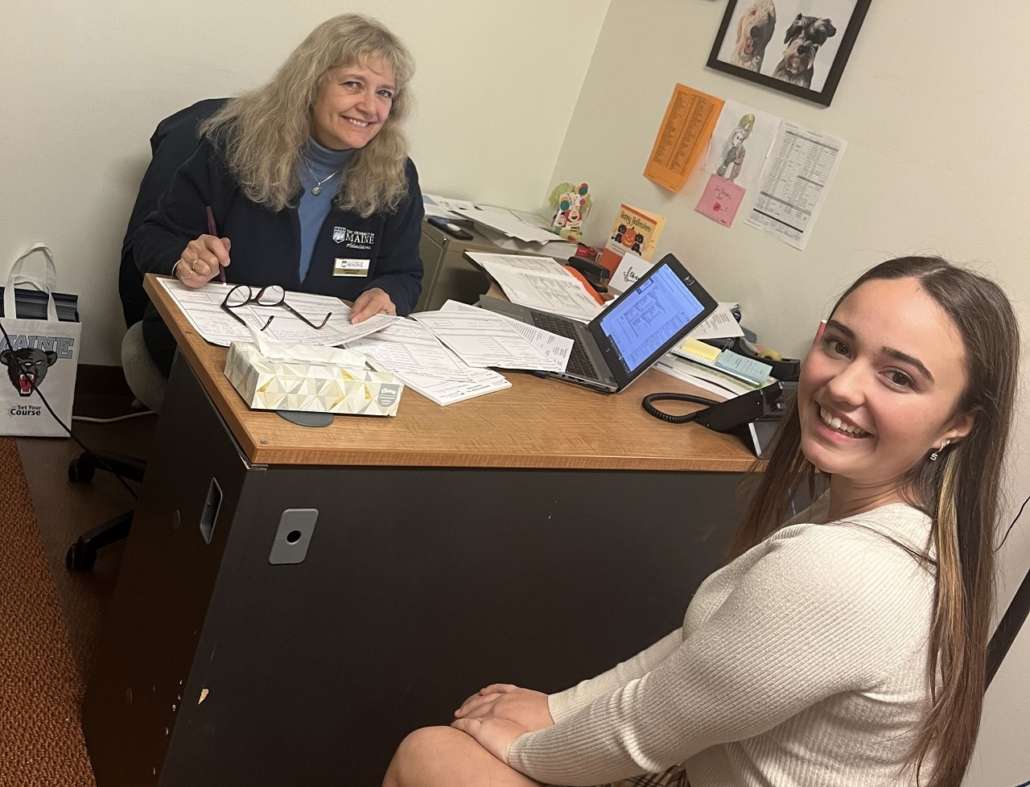
Sharon Oliver, back, Director of Transfer Admissions at the University of Maine, with Winslow High School senior Lainey Bell. (Central Maine Photography photo)
by Mark Huard
On November 29, 2022, Winslow High School hosted its annual Admit in a Day for Seniors. Admission representatives from the University of Maine, Husson University, of Bangor, Thomas College, of Waterville, Kennebec Valley Community College, of Fairfield, the University of Maine at Farmington, and the University of Maine at Augusta, were at WHS and gave students on the spot admission decisions, as well as feedback on their applications. In total 61 of 101 WHS seniors scheduled 117 admissions appointments for application review. Winslow High School is pleased to report that 100 percent of the students who participated were accepted at one or more colleges. As a result of their commitment to academics while at Winslow High School, the six colleges and universities awarded a total of $2,038,000 in merit scholarship money to students over their four years with the expectation that they maintain an identified GPA.
PHOTO: Winslow Cub Scouts visit fire house
/0 Comments/in Community, Winslow/by Website Editor
From left to right, firefighter Lieutenant Adam Burgess, Cub Scout Freddie Pullen, Cub Scout Jack Teague, Lorelei Pullen, Cub Scout Jonah Burke, Cub Scout Peter Small, Hannah Small, Aubrey Small, Cub Scout Ryder Johnston, firefighter Shawn Stetson. (photo by Chuck Mahaleris)
On November 5, 2022, the Winslow Cub Scout Pack #445 had the opportunity to explore the Winslow Fire Station and learn about firefighters with firefighter Lieutenant Adam Burgess and firefighter Shawn Stetson. The Cubscouts are working on their Council Of Fire unit learning about their community and the important rolls in it.
PHOTO: New rankings at Huard’s Martial Arts
/0 Comments/in Community, Sports, Winslow/by Website Editor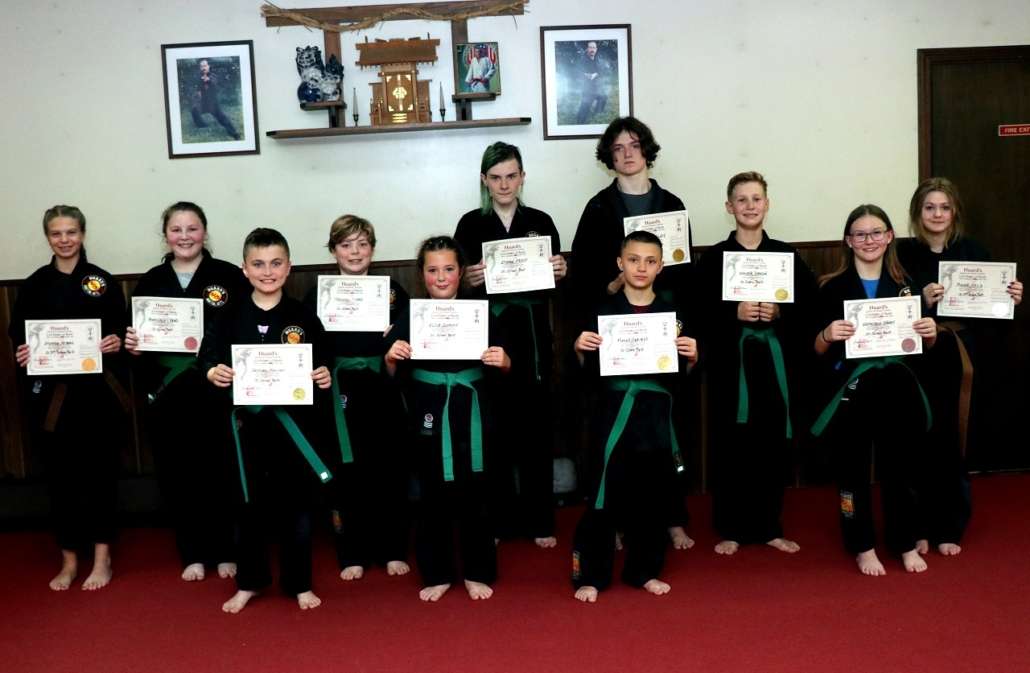
Congratulations to the following students who earned new rankings at Huard’s Martial Arts, in Winslow, on Saturday, November 12. From left to right, Mikayla Achorn (3rd degree brown belt), Mayleigh Crews (green belt), Jackson Hanson (green belt), Trenton Clark (green belt), Elsie Dumont (green belt), Ethan Frost (green belt), Manny Hurtado (green belt), Ayden Willey (green belt), Walker Johnson (green belt), Kaitlynn Shores (green belt), and Maddie Field (3rd degree brown belt). (photo by Mark Huard)
EVENTS: Yummy, Ready-to-Be-Baked Turkey Pies Coming
/0 Comments/in Community, Events, Winslow/by Website Editor It’s one of Winslow’s most beloved holiday traditions! On Saturday, December 3, from 12 to 3 p.m., Winslow Congregational Church (12 Lithgow Street) will be offering over 400 incredibly yummy, ready-to-be-baked turkey pies for curbside/drive-through pick-up. Cost is just $12 per pie, with all proceeds going to empower the Christian/humanitarian work of the church, and for building improvements and repairs.
It’s one of Winslow’s most beloved holiday traditions! On Saturday, December 3, from 12 to 3 p.m., Winslow Congregational Church (12 Lithgow Street) will be offering over 400 incredibly yummy, ready-to-be-baked turkey pies for curbside/drive-through pick-up. Cost is just $12 per pie, with all proceeds going to empower the Christian/humanitarian work of the church, and for building improvements and repairs.
Freshly-prepared for baking and featuring an all-new crust recipe and a mouth-watering blend of turkey, peas, celery, carrots, onions, broth, and a pinch of sage, each turkey pie will be perfect for supper or for freezing for later winter comfort-food enjoyment.
Also available for your sweet tooth will be various delectable dessert pies, also available for $12 each, prepared by the members of Benton Falls Congregational Church and which will raise money for that church.
For more information, please call Winslow Congregational Church at 872-2544.
Interesting links
Here are some interesting links for you! Enjoy your stay :)Site Map
- Issue for January 30, 2025
- Issue for January 23, 2025
- Issue for January 16, 2025
- Issue for January 9, 2025
- Issue for January 2, 2025
- Issue for December 19, 2024
- Issue for December 12, 2024
- Issue for December 5, 2024
- Issue for November 28, 2024
- Issue for November 21, 2024
- Issue for November 14, 2024
- Issue for November 7, 2024
- Issue for October 31, 2024
- Issue for October 24, 2024
- Issue for October 17, 2024
- Issue for October 10, 2024
- Issue for October 3, 2024
- Issue for September 26, 2024
- Issue for September 19, 2024
- Issue for September 12, 2024
- Issue for September 5, 2024
- Issue for August 29, 2024
- Issue for August 22, 2024
- Issue for August 15, 2024
- Issue for August 8, 2024
- Issue for August 1, 2024
- Sections
- Our Town’s Services
- Classifieds
- About Us
- Original Columnists
- Community Commentary
- The Best View
- Eric’s Tech Talk
- The Frugal Mainer
- Garden Works
- Give Us Your Best Shot!
- Growing Your Business
- INside the OUTside
- I’m Just Curious
- Maine Memories
- Mary Grow’s community reporting
- Messing About in the Maine Woods
- The Money Minute
- Pages in Time
- Review Potpourri
- Scores & Outdoors
- Small Space Gardening
- Student Writers’ Program
- Solon & Beyond
- Tim’s Tunes
- Veterans Corner
- Donate



